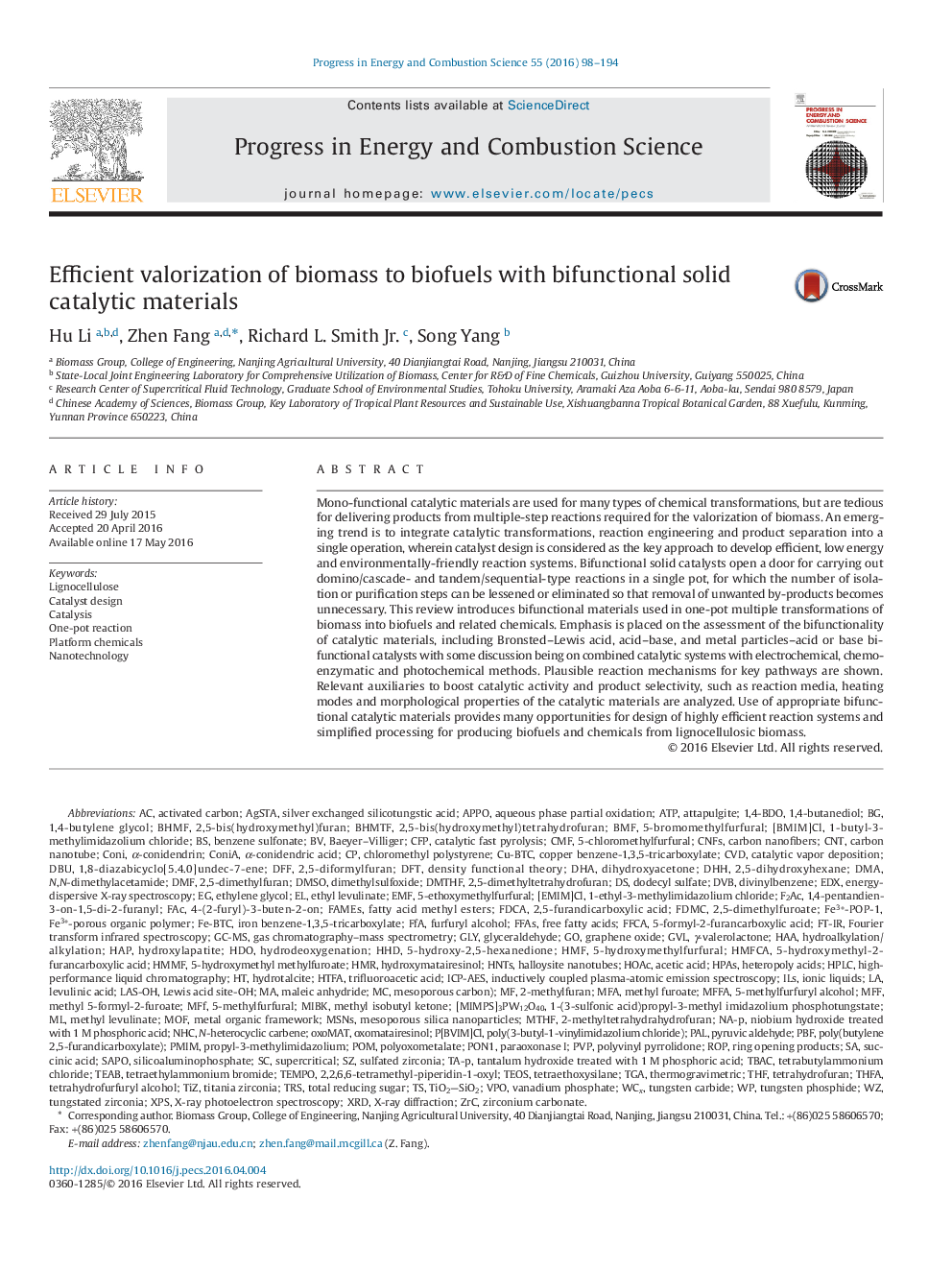| کد مقاله | کد نشریه | سال انتشار | مقاله انگلیسی | نسخه تمام متن |
|---|---|---|---|---|
| 241627 | 466293 | 2016 | 97 صفحه PDF | دانلود رایگان |
Mono-functional catalytic materials are used for many types of chemical transformations, but are tedious for delivering products from multiple-step reactions required for the valorization of biomass. An emerging trend is to integrate catalytic transformations, reaction engineering and product separation into a single operation, wherein catalyst design is considered as the key approach to develop efficient, low energy and environmentally-friendly reaction systems. Bifunctional solid catalysts open a door for carrying out domino/cascade- and tandem/sequential-type reactions in a single pot, for which the number of isolation or purification steps can be lessened or eliminated so that removal of unwanted by-products becomes unnecessary. This review introduces bifunctional materials used in one-pot multiple transformations of biomass into biofuels and related chemicals. Emphasis is placed on the assessment of the bifunctionality of catalytic materials, including Bronsted–Lewis acid, acid–base, and metal particles–acid or base bifunctional catalysts with some discussion being on combined catalytic systems with electrochemical, chemo-enzymatic and photochemical methods. Plausible reaction mechanisms for key pathways are shown. Relevant auxiliaries to boost catalytic activity and product selectivity, such as reaction media, heating modes and morphological properties of the catalytic materials are analyzed. Use of appropriate bifunctional catalytic materials provides many opportunities for design of highly efficient reaction systems and simplified processing for producing biofuels and chemicals from lignocellulosic biomass.
Graphical AbstractFigure optionsDownload as PowerPoint slide
Journal: Progress in Energy and Combustion Science - Volume 55, July 2016, Pages 98–194
